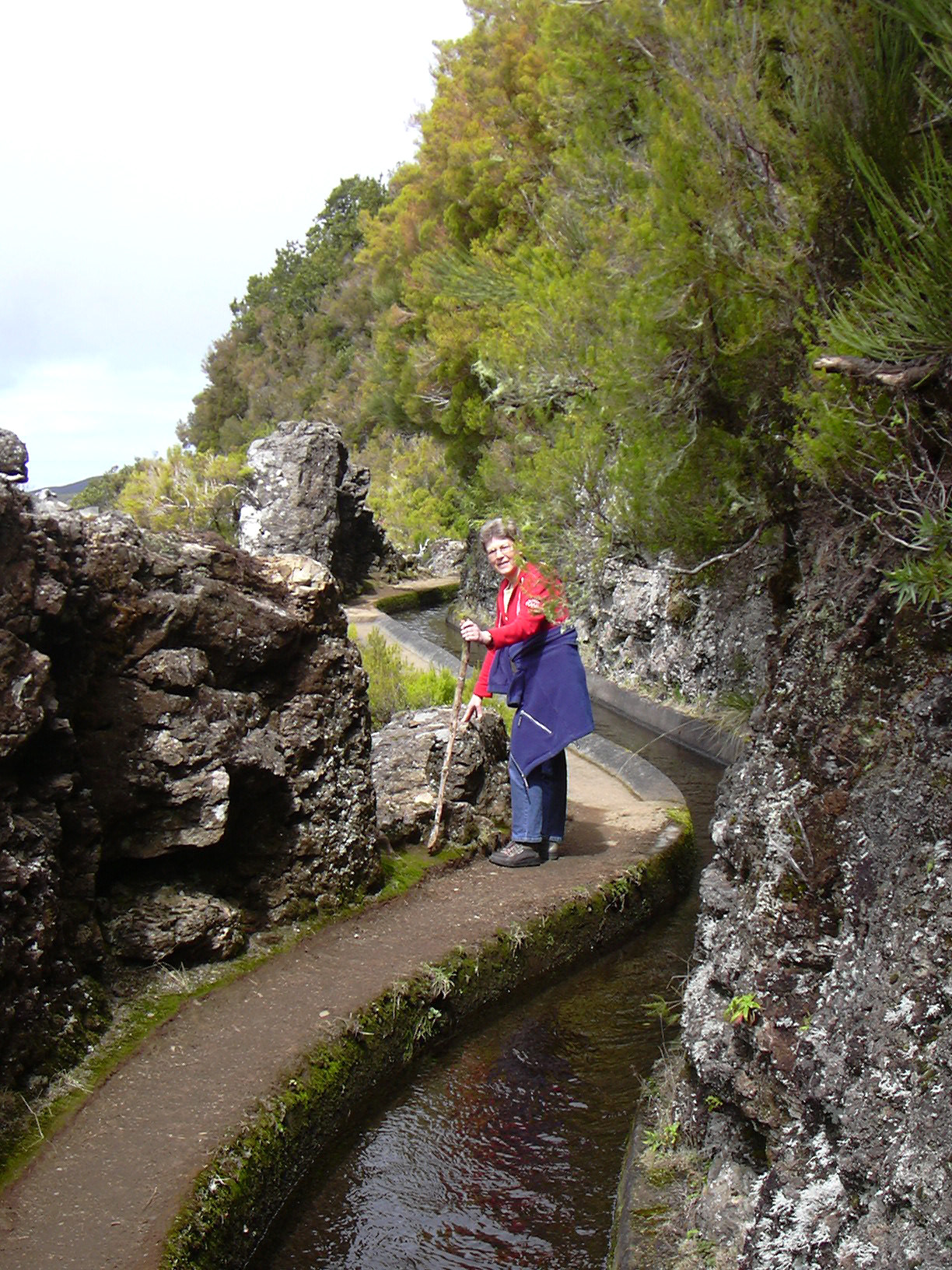Levada on:
[Wikipedia]
[Google]
[Amazon]
 A levada is an
A levada is an

 A levada is an
A levada is an irrigation
Irrigation (also referred to as watering) is the practice of applying controlled amounts of water to land to help grow crops, landscape plants, and lawns. Irrigation has been a key aspect of agriculture for over 5,000 years and has been devel ...
channel or aqueduct specific to the Portuguese Atlantic region of Madeira.
History
In Madeira, the levadas originated out of the necessity of bringing large amounts of water from the west and northwest of the island to the drier southeast, which is more conducive to habitation and agriculture, such assugar cane
Sugarcane or sugar cane is a species of (often hybrid) tall, perennial grass (in the genus '' Saccharum'', tribe Andropogoneae) that is used for sugar production. The plants are 2–6 m (6–20 ft) tall with stout, jointed, fibrous stalk ...
production. They were used in the past also by women to wash clothes in areas where running water to homes was not available. The idea of this style of water channel was brought to Portugal by the Moors
The term Moor, derived from the ancient Mauri, is an exonym first used by Christian Europeans to designate the Muslim inhabitants of the Maghreb, the Iberian Peninsula, Sicily and Malta during the Middle Ages.
Moors are not a distinct or ...
during the time of al-Andalus
Al-Andalus translit. ; an, al-Andalus; ast, al-Ándalus; eu, al-Andalus; ber, ⴰⵏⴷⴰⵍⵓⵙ, label= Berber, translit=Andalus; ca, al-Àndalus; gl, al-Andalus; oc, Al Andalús; pt, al-Ândalus; es, al-Ándalus () was the M ...
(dubious)
. Similar examples can still be found in Iberia, such as some Acequia
An acequia () or séquia () is a community-operated watercourse used in Spain and former Spanish colonies in the Americas for irrigation. Particularly in Spain, the Andes, northern Mexico, and the modern-day American Southwest particularly n ...
s in Spain.
In the sixteenth century the Portuguese started building levadas to carry water to the agricultural regions. The most recent were made in the 1940s. Madeira is very mountainous, and building the levadas was often difficult. Many are cut into the sides of mountains, and it was also necessary to dig of tunnels.

Levadas today
Today the levadas not only supply water to the southern parts of the island, they also providehydroelectric power
Hydroelectricity, or hydroelectric power, is electricity generated from hydropower (water power). Hydropower supplies one sixth of the world's electricity, almost 4500 TWh in 2020, which is more than all other renewable sources combined an ...
. There are more than of levadas and they provide a remarkable network of walking paths. Some provide easy and relaxing walks through beautiful countryside, but others are narrow, crumbling ledges where a slip could result in serious injury or death.
A popular levada to hike is the ' which continues as the '. Altogether it is about long. Along both parts there are long sections which may cause hikers to suffer vertigo
Vertigo is a condition where a person has the sensation of movement or of surrounding objects moving when they are not. Often it feels like a spinning or swaying movement. This may be associated with nausea, vomiting, sweating, or difficulties w ...
; and several tunnels for which flashlights and helmets are essential. The ' is a much easier walk. This levada runs from to the '' Tunnel''. It is known as the ' because acacias (commonly misnamed mimosa
''Mimosa'' is a genus of about 590 species of herbs and shrubs, in the mimosoid clade of the legume family Fabaceae. The generic name is derived from the Greek word (''mimos''), an "actor" or "mime", and the feminine suffix -''osa'', "resemb ...
s) are found all along the route.J. and P. Underwood, ''Landscapes of Madeira'' (Sunflower Books) is the most widely used guide to the levadas. It provides detailed instructions and maps covering 42 levadas and other walks.
See also
*Leat
A leat (; also lete or leet, or millstream) is the name, common in the south and west of England and in Wales, for an artificial watercourse or aqueduct dug into the ground, especially one supplying water to a watermill or its mill pond. Othe ...
* Flume
A flume is a human-made channel for water, in the form of an open declined gravity chute whose walls are raised above the surrounding terrain, in contrast to a trench or ditch. Flumes are not to be confused with aqueducts, which are built to t ...
References